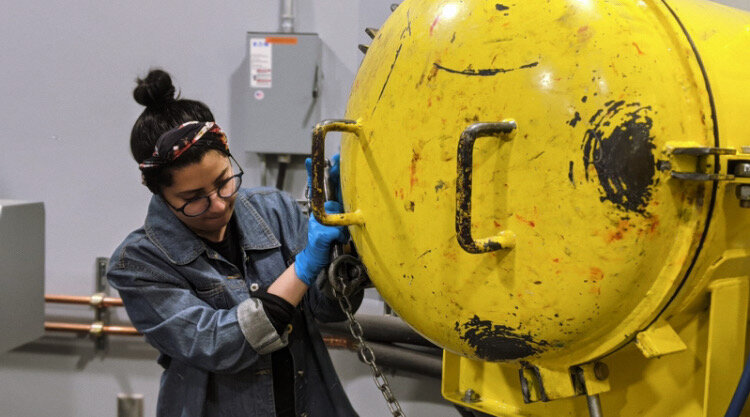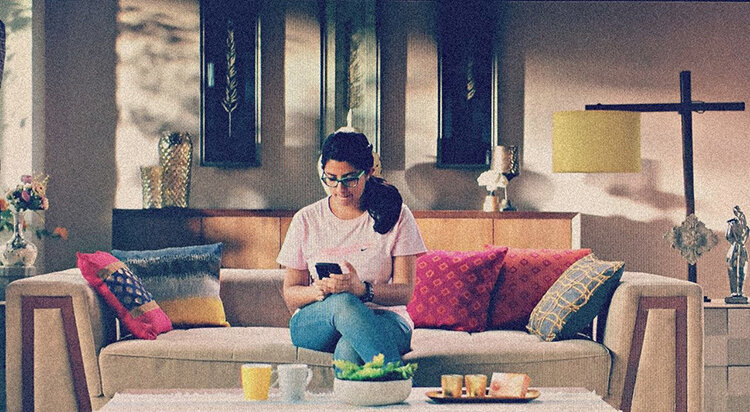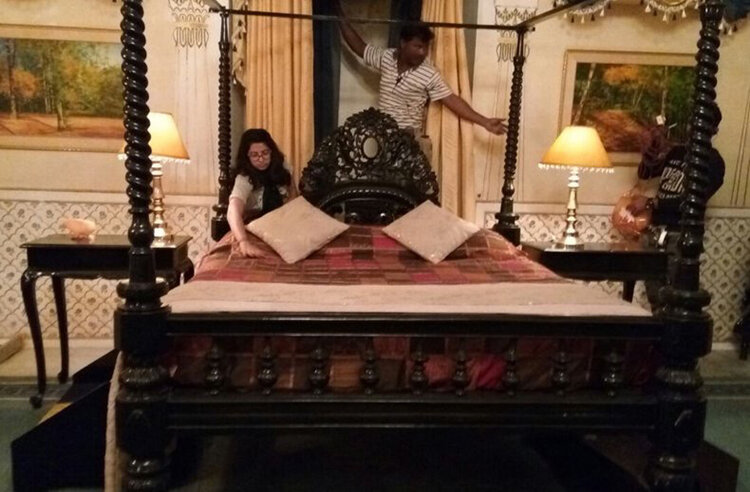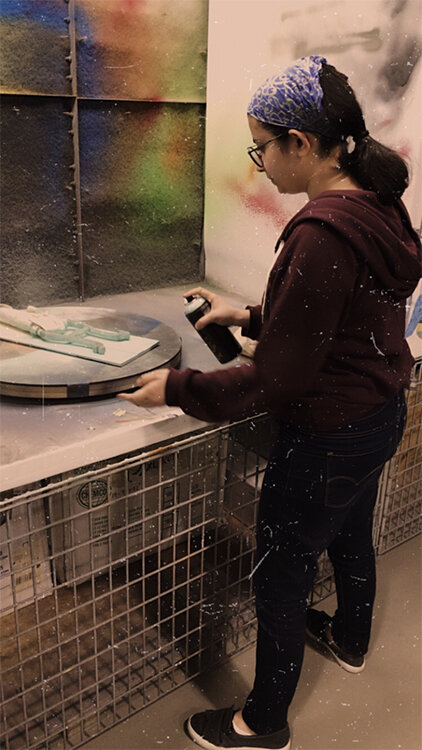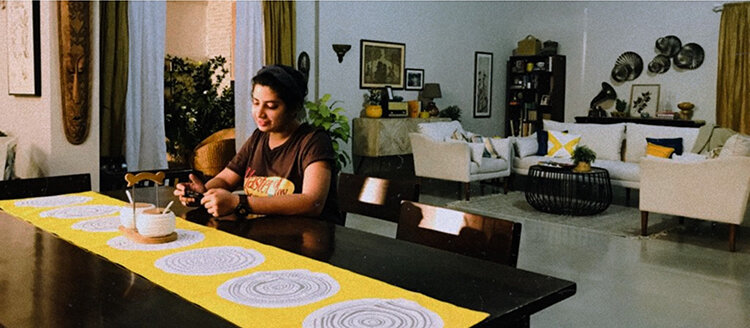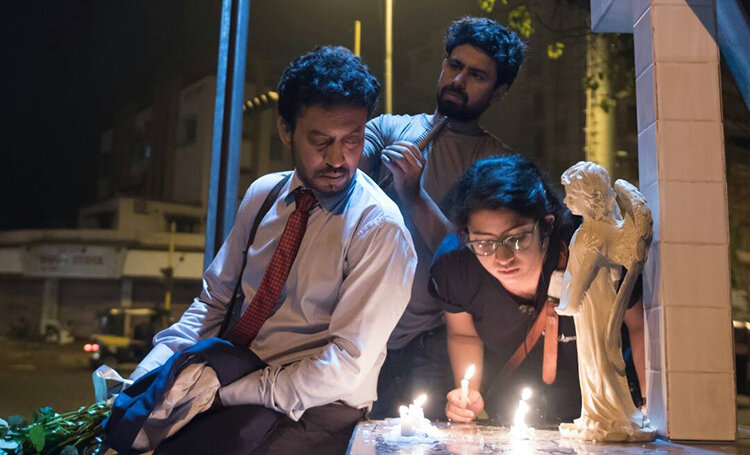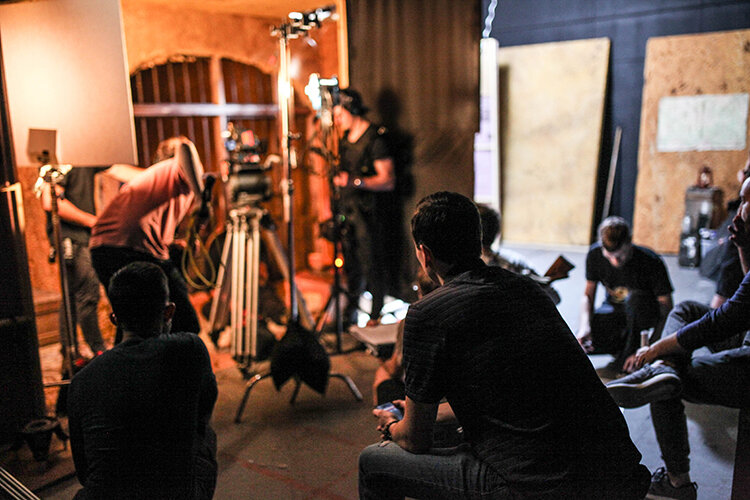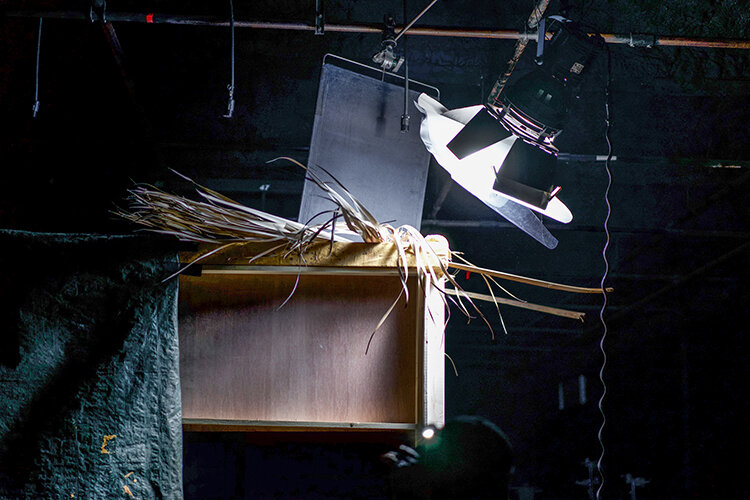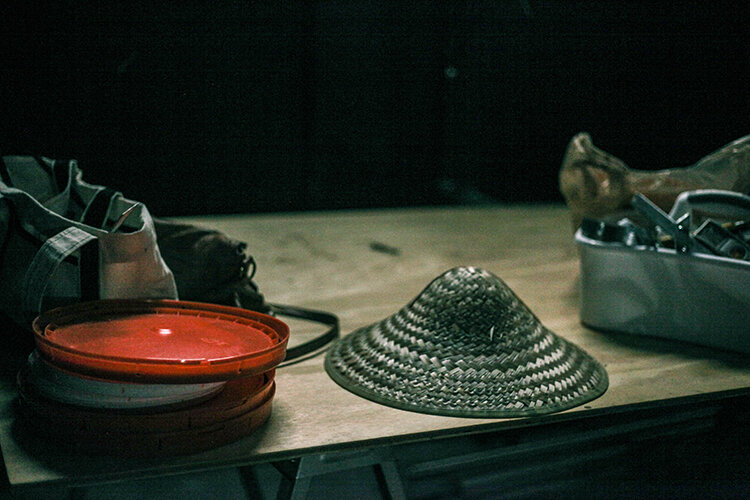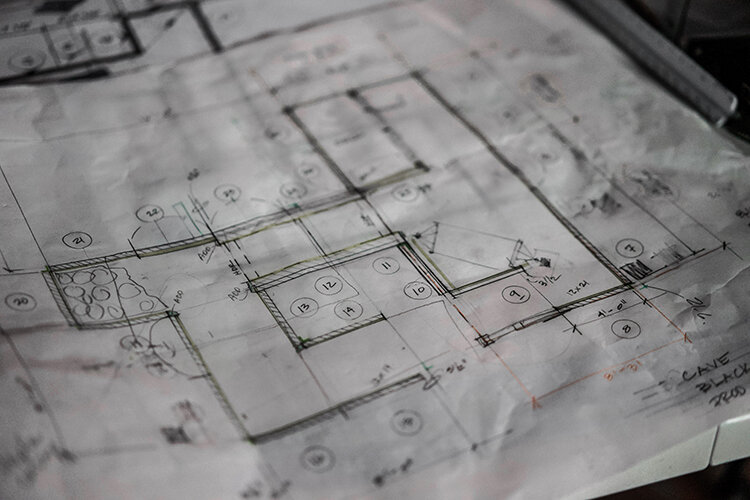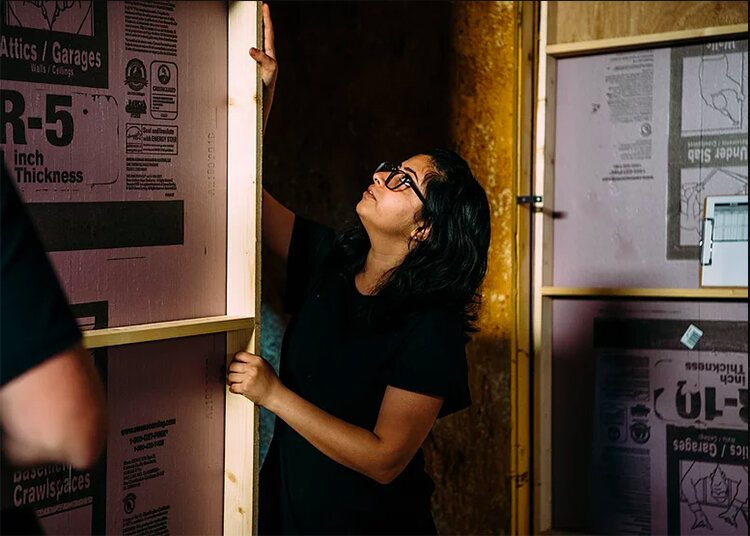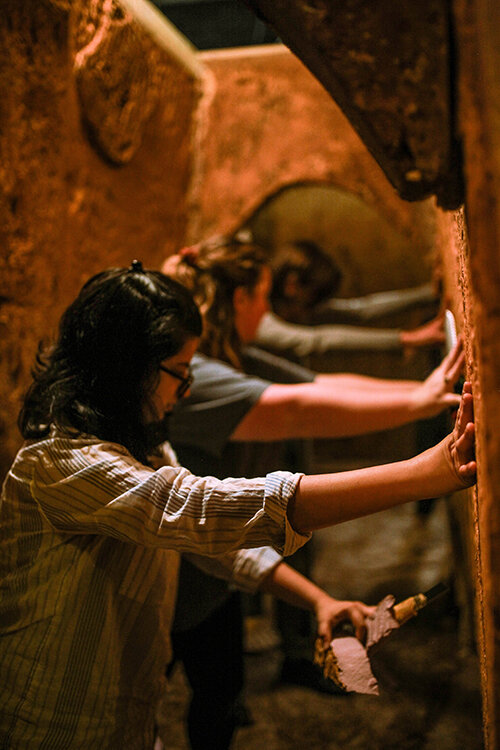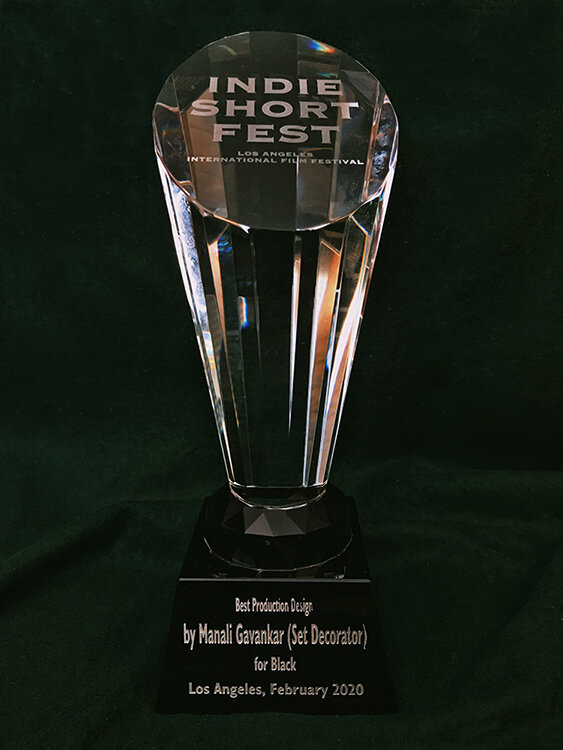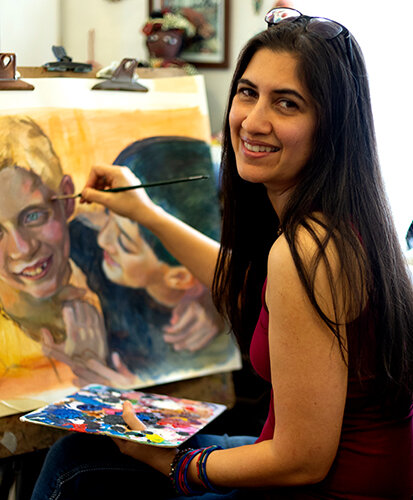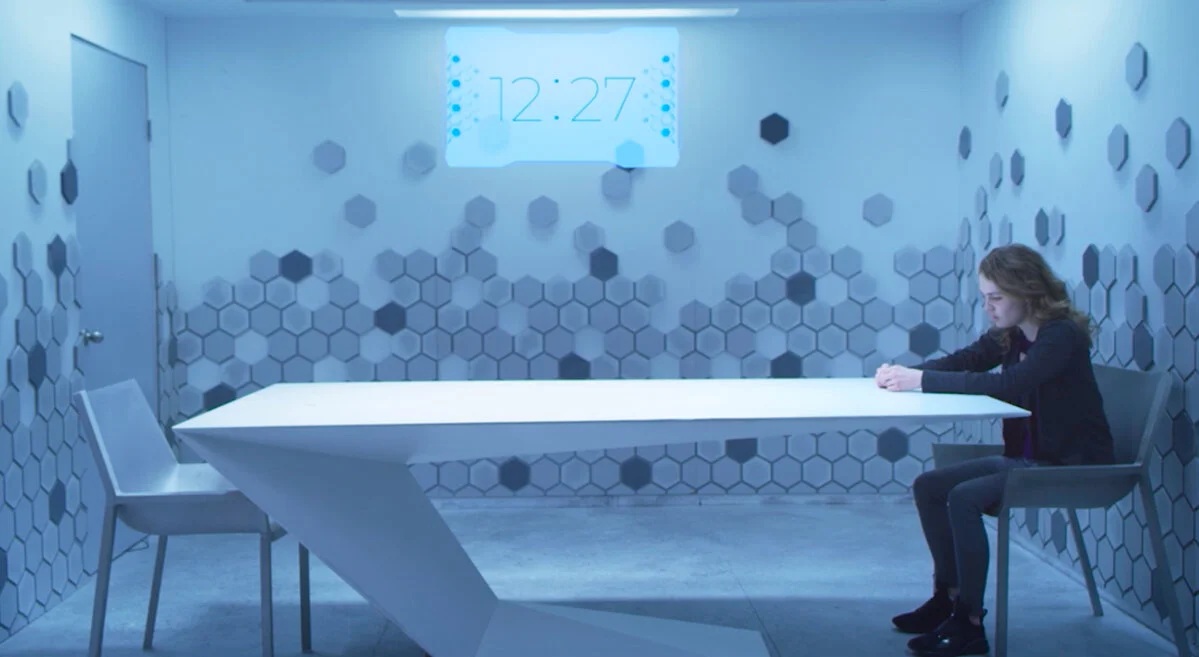Manali Gavankar
Interviewed by Shachi Kale
Manali Gavankar
Shachi Kale
1. Can you give us a brief introduction. Who is Manali Gavankar?
I’m a visual storyteller at heart and a set decorator by profession. I was born and raised in a small town called Vasai on the outskirts of Mumbai, in India. As a set decorator, I’ve been fortunate enough to get workopportunities on award-winning projects like Netflix original Sense8 Season 2, Australian feature film Hotel Mumbai, and the Judi Dench starrer British feature film Victoria & Abdul etc. while in India.
After working on international as well as Indian films and TV commercials, I moved to the United States to pursue my master’s in Production Design from the Savannah College of Art and Design (SCAD). I moved from Savannah, GA to Detroit, Michigan, where I’m currently based, briefly after the pandemic hit. While I continue to explore the landscapes of international cinema, I still consider myself to be in the nascent stage of my career and I’m looking forward to telling more stories through my work.
Manali’s prop design and set design work on SCAD initiative film ‘Time’
2. Can you tell us what exactly do they mean when they say, ‘set decoration’?
Filmmaking is visual storytelling, and so the visuals captured by the camera matter immensely. Production design is the visual department of the film and is a major contributor to the mood or emotional tone, of a film. Set Decoration is one of the many important aspects of production design on a film or a show.
A production designer determines the visual style of the entire project, with the sets, locations, color palettes, properties, color grading etc. for a film. I then step in as a set decorator and start with the character research and bring in elements to bring the world around the narrative to life by sourcing everything that you see on screen, right from furniture, props, fabrics, etc.
Set Decoration in my opinion, isn’t about making things look pretty, it’s about capturing the true essence of the narrative and creating a world relevant to the story. That’s what makes a movie so impactful.
Set Decoration work on fashion photoshoot for CoverStory
3. What made you incline towards the field of production design & set decoration? Was it an aspiration while growing up or was it something you figured out when you grew up?
This was something that I knew I eventually wanted to do while growing up, but I was too afraid to say it out loud because it was too unconventional for where I came from. Growing up in a small town, everyone around me was preparing to walk right into the cookie-cutter life of stereotypical Indian engineers and doctors. But I wasn’t particularly good at math or science while in school, so naturally I was made to believe that I’m not capable of anything or making a career in a solid conventional field. It’s tough to be a kid and not be good at math in India! So because of everyone around telling me that I won’t have a good future, I had this drive, from a very young age, to prove them wrong and figure out, “if not this, then what?”.
As a teenager, I was very fascinated with storytelling and loved watching movies. I still remember when I discovered the little ‘behind-the-scenes’ video of a movie for the first time, after seeing all the people working behind the camera, I thought “Somebody is doing this job, working hard to bring entertainment to so many people! This could be me!”. That’s when I discovered Production Design as a field. How amazing it would be to create a world to tell stories, I thought, and that’s when this curiosity led to a solid research about the field.
Lived-in artist apartment setup for Hotstar tv commercial
4. How did you get started in the entertainment industry?
Because of major lack of knowledge about this field in any middle-class household, I had to take it all upon myself to conduct extensive research about the field in order to educate myself about it. So, I reached out to my cousin, a strong, independent woman, who was the only person I knew had dared to choose a different career path like photography and has been an inspiration to me growing up. With her help, I visited several institutes, film schools, tagged along and helped on her photoshoots, and read a lot about this field of work.
Having been raised in a conventional middle-class Indian family, where movies and television are typically seen just as a means of entertainment and never a possibility as one’s career choice, gaining my folks’ confidence and support took far longer than I had anticipated. I had to fight. I had to prove to be taken seriously about this; but most importantly I had to wait even to get started.
I had procured contact information of some well renowned industry professionals, but I was too afraid to reach out. At this point, my aunt, another strong, independent woman, and also my only other strong supporter, told me something which really gave me a kickstart in this industry - “Why not reach out to people who can help you? What do you have to lose?”. This is the one thing that I tell myself any time I’m too afraid to do anything, “why not?”. With this approach, I reached out to Dilip More for guidance, a world-renowned art director and the most humble and genuine person I know, who eventually became my mentor in the industry and taught me a lot about work and about life.
Manali’s first big break - Netflix Original Sense8 season 2
5. If you had to pick one, what would be your favorite genre that you’ve worked on thus far?
Well, more than genre, I feel I enjoy working more on lived-in setups, where I can really dive deep into character research and bring in elements to enhance the narrative. But genre wise, my personal favorite that I have worked on so far, has been period film & TV projects. I love doing ethnographic research from a given period in history. I find it fascinating to see how the characters in the narrative would have lived in a given period, what world did they live in, what did the mundane objects around them looked like. I absolutely enjoyed my time working on Victoria & Abdul. I learnt a great deal about India of the late Victorian era through my research. We had to recreate a variety of different setups from the late 19th century, including a market street setup, that too on the modern busy streets of Agra! Never had I ever admired the research part of my job as much as I did while working on this one. The best part was that I was surrounded by all the antique props throughout the course of the shoot.
Market Streets of Agra for British period drama ‘Victoria & Abdul’
6. How do you conduct your research for a project? What level of detail do you go into in your process?
I love stepping into the characters’ shoes to bring different elements to my sets. I like to ask questions like what the characters are like, what strata of society do they come from, what are their habits etc. and then I bring in the little details and elements to create the world for the characters to live in. Sometimes through case studies, I even like to develop little backstories about the characters and capture even their trivial traits in order to bring in authentic elements to my setups. I like to think of my process as visually representing the character’s personalities through my setup. It’s funny, but when I was working in India on a feature called BlackmailI, the creative process was so engrossing for me, that I started surrounding myself with similar things from setups and was living in that same vibe, during that entirety of project!
Lived-in setup for Indian feature film ‘Blackmail’
7. How do you feel your training at SCAD has helped you take your skills to the next level?
More than just the formal training that I received in classrooms, I feel, it was the amount of exposure, that I got during my time at SCAD, that has completely opened my mind to new ideas and possibilities. I got exposed to a lot of different art and design fields that I didn’t even know existed! I often got opportunities for inter-departmental collaboration, so I learnt various new skills from other art and design fields which I could bring to my own craft. I also got exposed to the world of immersive experience design, while working as a student employee at SCAD’s immersive museum.
The best part of being in an art and design school was that there was a constant exchange of creative energy everywhere around me, that has definitely helped me bring a fresh and nuanced approach to my work. After graduating, my quest for taking my skills to the next level, by fusing technology with scenic design even led me to an internship in the field of immersive design, where I learnt more new skills.
Set Decoration on student thesis short film ‘Black’
8. What are some of the film & TV projects that have inspired you and taught you about your craft?
There are many movies & shows that have inspired me but then there are movies like Wes Anderson’s The Grand Budapest Hotel that make me feel grateful for being a part of this fraternity. One of my favorite movies that I can watch anytime is Interstellar. In fact, all Christopher Nolan films have held me in a constant state of awe. The way he brings his concepts to the screen is phenomenal, but most importantly, I feel his projects are a true testament to creative & cohesive collaboration. Nolan relies heavily on built sets and practical effects as opposed to CGI and often collaborates withproduction designer Nathan Crowley, who is my biggest inspiration in this field. I studied the making of the ‘Tesseract scene’ from Interstellar, for one of my classes at SCAD. For this scene they created and physically constructed something that currently only exists theoretically to us humans. How brilliant is that!
But, with the advent of the golden age of TV shows in last 10-15 years, it’s really difficult to name a handful of shows that’ve inspired me. Off the top of my head, I was most impressed and inspired by Breaking Bad, Game of Thrones, The Handmaids tale, Madmen, that captured the mood, grandeur, desolation and details of the narrative respectively.
Production design and set decoration in my opinion, isn’t about making things look pretty, it’s about capturing the true essence of the narrative and creating a world relevant to the story.
9. What would be your ideal project? Who are the kind of people you want to work with in the future?
So far, I’ve gotten the opportunity to work on period dramas, and research oriented lived-in setups, and although technically I have designed props for a futuristic short film once, I would love to work as a set decorator for a sci-fi project. Eventually, I also want to venture into solo exhibit of my set where I can create an immersive and sensory experience based on my own script by fusing technology and design.
Creative collaboration has been at the heart of my work and so I appreciate it when the people I get to work with are excellent collaborators. I’m always looking forward to working with people from diverse backgrounds as everyone brings their own unique perspectives and creative inputs to the table. Since our work hours are not like a regular 9 to 5 job, we are constantly in each other’s lives during the span of a project, but I’ve been lucky enough to have worked with fun and passionate people so far who have inspired me to push myself more. Working with production designers like Nathan Crawley and Mark Friedberg has always been my dream.
10. How were the things your learnt while working in India different than things you learnt while in the U.S.?
I’ve been fortunate enough to get opportunities to work with film crews from India as well as England, Australia and U.S. and I have notice certain cultural differences on all my projects. I think since both India and U.S. have such different cultures, there are bound to be some differences in the work patterns as well. Also, because the Indian film industry is much newer as compared to Hollywood. Even some of the work terminologies are different in the U.S. than in India. Like for example, the responsibilities that I had as a set dresser in India, generally falls under a set decorator’s purview, here in the U.S. After coming to the U.S. I learnt that there are several different positions within the art department, while in India, because of budget constraints there can be only a handful people working in the art department, which still works pretty well for us.
But the major difference that I’ve noticed is the collaboration style. On the American and British projects that I’ve worked on, even while in India, I’ve experienced that the entire crew is working towards one vision, and there’s an exchange of creative inputs and a very close, synergized collaboration. For example, when a production house hires a production designer to lead an entire aspect of the project, they need to trust the designer’s creative vision and decisions. Because that’s what collaboration means. While on some of the Indian projects I was a part of, I’ve seen that the creative inputs were heavily influenced only by a small group of people and lacked collaboration, but I’ve seen this changing slowly, which is a good sign.
Collaboration as a set dresser on Australian feature ‘Hotel Mumbai’
11. What are some of the challenges you have faced in life and found a solution which was helpful in the long run?
From trying to gain my parents’ confidence for making a career in an unconventional field; to trying to make it in the industry while crashing at different relatives’ homes; and most recently, graduating right at the beginning of the pandemic; life has thrown a lot of challenges at me. When I’m in a tricky situation, I try to gather all the great advice I have received in life. The one advice that has stuck to me is something my father used to say to me very often - “expect the best but prepare for the worst”. It's very cliched and simple but this advice has helped me both personally and professionally. While working on any project, I truly believe in preparing for the worst possible scenarios and keeping backup options ready. Because of the fast-paced nature and the high stakes involved in the film business, being prepared with backups has made my work much easy. Finding solutions to every challenge I’ve faced has shaped me as an artist and as a person, and this has made me who I am today.
Manali Gavankar’s Featured Work
Behind The Scenes with Manali Gavankar
